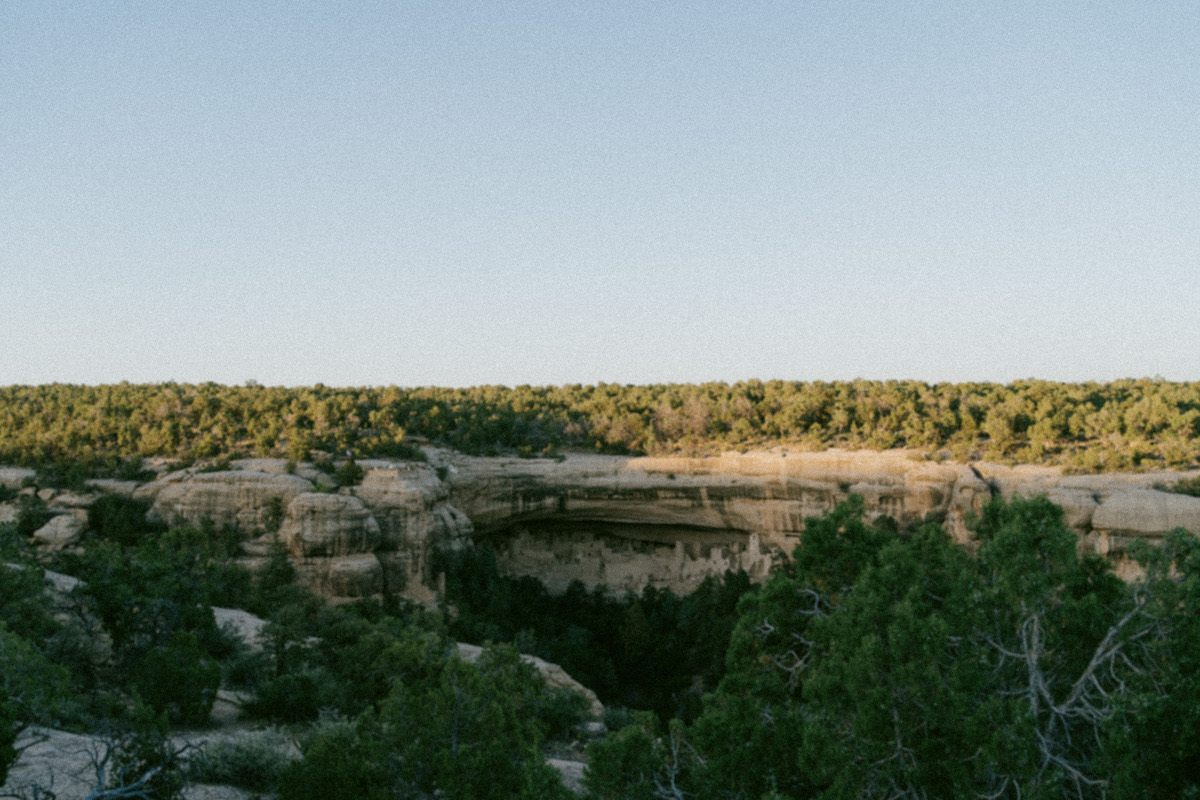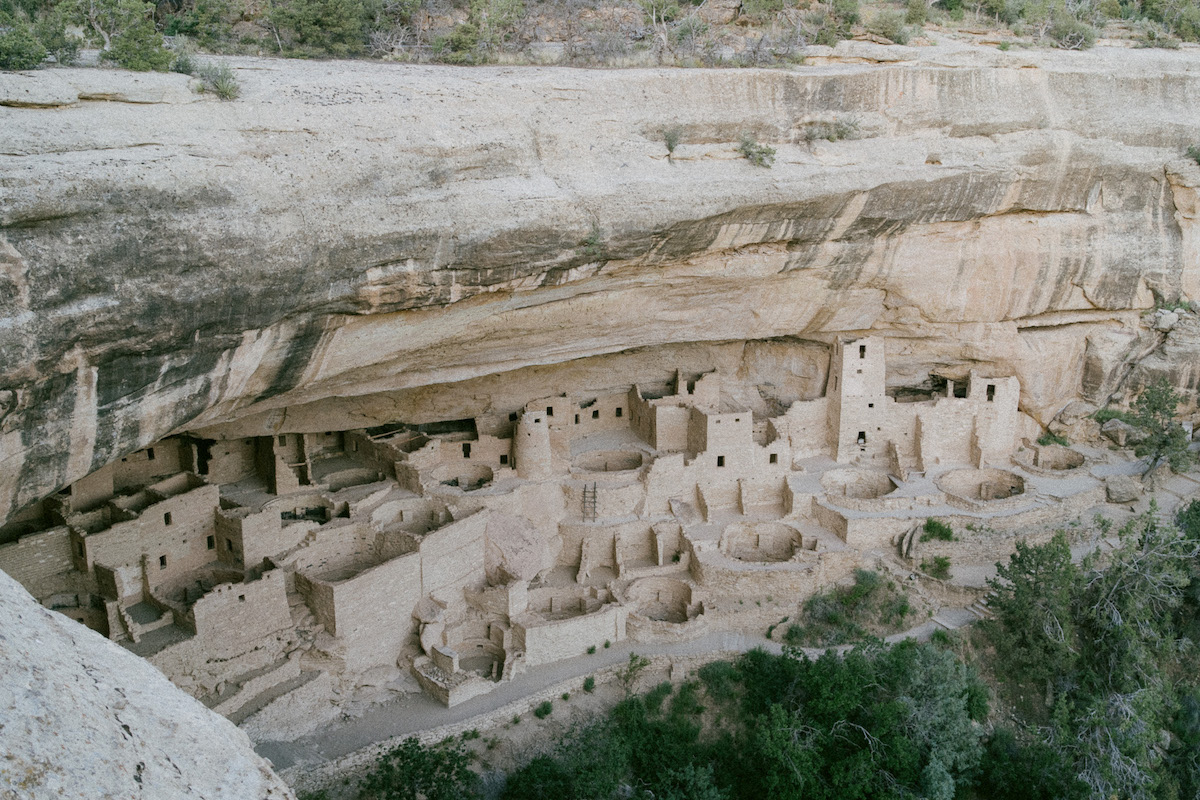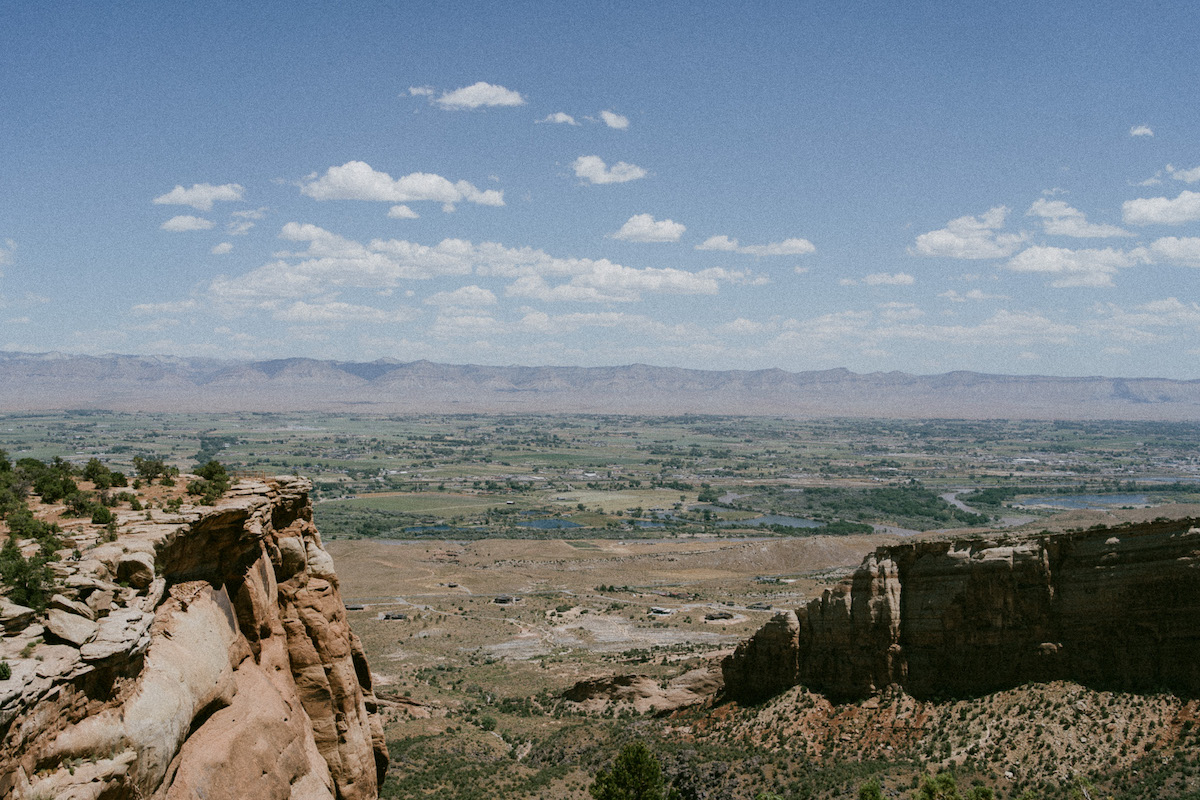Local historian, anthropologist and son of Grand Junction, Zeb Miracle, is reading out loud The New York Times’ first impressions of the area from 1875. They aren’t flattering. “…It was just at the hottest hour that this view burst upon us. We saw a land which was truly the abomination of desolation,” he recites to us, a busload of international journalists for whom this landscape is quite foreign. Such words, I dare say, have never been written about Sydney, Paris, Berlin and London. “Utter desolation, sterility, and bareness were its only features. It was a magnificent, but depressing sight. In its present state, it is unfit for human habitation.”
We are travelling down the long road between Downtown Grand Junction to nearby Colorado National Monument, and the landscape differs largely from one side of the road to the next. Desolate, barren desert to one side – that which almost 150 years ago, a journalist first looked upon, aghast – then on the other, verdancy. Suburban homes and their synonymous lawns, and vineyards. Vineyards of pears, apples (“One of the governors of Colorado said, ‘the apple that did tempt Adam and Eve was a Jonathan Apple from Mesa County, and I do not blame them that they did eat it,’” Zeb quips) and grapes of the utmost sweetness; so much so that almost 90 per cent of Colorado’s grapes are now grown in Mesa County.
Zeb explains that Colorado’s hot summer days that cool down rapidly in the evenings, paired with the state’s high altitude, naturally increases the sugar production in the fruit that is grown in the area. How though, in this desert basin, did whole swathes of land come to water? The New York Times article ended with an account of looking upon the junction at which the Colorado and Gunnison rivers meet, and after which the area is named. “…A great river, oceans of water, a wealth of it. Precious as gold in this desert land; a river big enough you could sail a yacht in,” Zeb continued. “One that you could swim all day. Suggestive of fertility, of wealth, of all that makes a country fit for man to inhabit…More precious than mines of silver and gold is the abundance of water.”
He looks up from his paper, and gestures to the stretches of homes and vineyards out the window. “And that’s why people came here. And that’s why when you look out over this side, you will see a thriving community. We’re not in ‘the abomination of desolation.’ Every blade of grass that you see out the window, every tree that’s not a cockpit tree, every grape that you enjoyed in that bottle of wine the other night or last night, or this morning,” he says, eliciting laughter from the bus. “…It’s all because we pulled water out of those rivers. We saw the potential. This can be a tough environment, but we can overcome that.”
“When President Taft came out here, he said, ‘You look in parts of this country and it appears to be the most godforsaken place there is on Earth. But then you see where water has been introduced, and it’s as beautiful as the Garden of Eden. It’s as magic as rubbing Aladdin’s lamp.’ And that, to me, is our town – as magic as rubbing Aladdin’s lamp, because we have overcome those struggles.”

There are more archaeological sites per square metre in Colorado than anywhere else in the United States, and as I would discover days after our bus ride from Grand Junction, Mesa Verde National Park is undoubtedly one of the more impressive. Structures still remain from 550 CE, the earliest evidence of Ancestral Puebloans’ semi-nomadic existence and below-ground level dwellings; to 1200 CE, and the migration from multi-storey villages on tops of cliffs, to cities built into their rock faces.
The most famous artefacts are undoubtedly the cliff dwellings, stone structures – some lone homes; the largest, Cliff Palace, akin to a small village – built into rock alcoves many storeys off the canyon floor, where the Ancestral Puebloans moved en masse for the last 100 years of their 750 history in the area. With its some 150 rooms, Cliff Palace is of particular significance to the 26 modern Puebloan nations who consider Mesa Verde their homeland, with evidence of dozens of footpaths connecting village to village back here.
The original mortar, simply water and soil, still holds together the stone today, the high desert and alcove conditions preserving the structures as they stood centuries ago. We’ve navigated ladders to get down from the cliff top, passing handholds carved into the wall that men and women and children used daily, precariously hanging over the canyon’s mouth.“This is where everything changed,” our guide tells us, as we stand in what remains of the oft-thought administrative or governmental centre. “The people rejected the hierarchy and they chose to be more communal, to share power and resources.”

We don’t know why the Ancestral Puebloans left the cliff dwellings after only a hundred years; we can only speculate. Perhaps, all the usual reasons – social, economic, environmental, political, religious – perhaps none that we can conceive of. “When you ask them, ‘Why did you leave?’ They all give the same answer,” we’re told. “No matter who you talk to, the same answer. Same answer. ‘It was time to go. It was time to go.’”
However, as once they came to Mesa Verde, having heard word that corn could grow and be harvested, and shared in community, in alcoves sheltered from an unforgiving sun and cold night; so do we imagine that it was for a more prosperous existence elsewhere did they leave their homeland. “Everything we do, we do for our children, and our children’s children,” he says, conjuring to mind those faces for whom I, too, would walk across deserts to give better lives. “We thank our ancestors, and ask for the grace to do the same.”
We disembark from the bus at our destination, the Colorado National Monument, a picturesque canyon with spires upon spires rising from its centre. Overshadowed by its more famous distant neighbour, the Grand Canyon, the trail we’re on is clear but for us. Zeb leads the way, and stops here and there to point out the specific peculiarities of the area; not the least, a dark soil with the appearance of charred breadcrumbs by the side of the walking trail.
“If we didn’t have cryptobiotic soil, nothing large could grow here. It would just get torn up,” he explains, as we all gather by him. “Crypto holds the ground together and provides some nourishment.” In a dormant state, the soil certainly reveals nothing of its integral role in the desert’s ecosystem. Nondescript and coarse, we’re invited to lightly touch, and it feels akin to dry coral.
He kneels where he stands. Just a bit of water poured from his bottle onto the soil, and green bursts forward. An amalgamation of algae, fungi and cyanobacteria, the latter releases gelatinous filaments when exposed to even a bit of water, binding the soil together and protecting against erosion. It is in this way that desert flora is able to flourish. Against the odds, in ‘utter desolation, sterility, and bareness’ where water is scarce, life continues to prosper.




 Photograph by Mariela Summerhays.
Photograph by Mariela Summerhays.